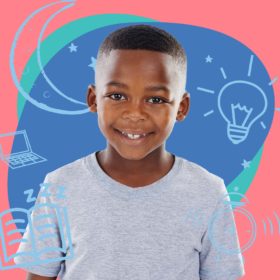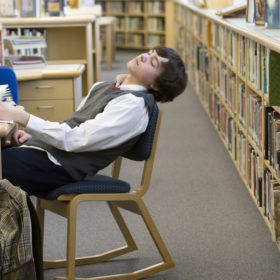Sleep Habits and Learning

How are your family’s sleep habits? Does your household have a habit of going to bed late, sleeping in, or watching screens before bed?
Sleep habits and routines are important throughout life and play a major role in not only health and well-being but also in helping students of all ages be their best selves while learning.
Understanding the Sleep and Learning Process
Both the quality of sleep (how good) and quantity (how much) sleep a person gets at night affects learning processes and memory. According to Harvard Medical School, a healthy amount of rest helps improve learning and memory in two important ways:
- Sleep Deprivation, Concentration, & Memory. Sleep deprivation affects concentration and memory. A person with sleep deprivation is unable to concentrate and therefore, unable to learn optimally.
- Not Enough Sleep and Retention. Poor sleep habits that create a lack of restful sleep hinders memory and the process of retaining information.
Naps? Not Just for Preschoolers!
Children who take naps more often throughout the day or rest fully throughout the night were more likely to retain any information they learned post-nap and even into the following day!
University of Arizona 2017 study found that adequate sleep improves memory recall in young children, especially preschoolers.
Low-quality sleep or sleep deprivation affects mood, learning performance, the heart, and the brain. When a young learner is deprived of adequate sleep, their neurons no longer function effectively and they begin to lose access to information.
Better Sleep Habits—Tips for Students:
Here’s how to help children get eight hours of quality slumber every night.
- A Consistent Bedtime Routine. Setting a consistent bedtime routine for children is crucial to ensure their mind and body is prepared for sleep. They are able to settle down, relax and adapt to the schedule. A 20-minute pre-bedtime routine that consists of soothing activities such as brushing teeth, putting on PJs , a relaxing bath, and reading allows children to comfortably settle into the night. A routine presents children with a sense of comfort and familiarity to ensure they relax.
- Shut Off Technology: Electronic screens emit a blue light which can negatively impact a person’s ability to fall asleep. In fact, blue light exposure causes a shift in the circadian rhythm and suppresses melatonin. Instead of blue light, use dim red lights as night lights prior to sleep. Red lights are far less likely to impact the circadian rhythm and hinder melatonin. In addition, avoid looking directly at bright electronic screens at least three hours prior to sleeping. Read more about managing screen time.
- Create a Comfortable Environment: Without a comfortable room environment for children to sleep in, they’ll be more likely to toss and turn at night. Optimizing the bedroom is an integral part of the rest process to prevent distractions. Keep your child’s room at room temperature of around 65 degrees to allow their body and brain to cool down and relax.
When a young learner has a full eight hours of sleep, their brain and body are in optimal condition to learn. Access your child’s full, incredible potential with our engaging programs today!



